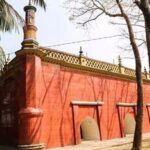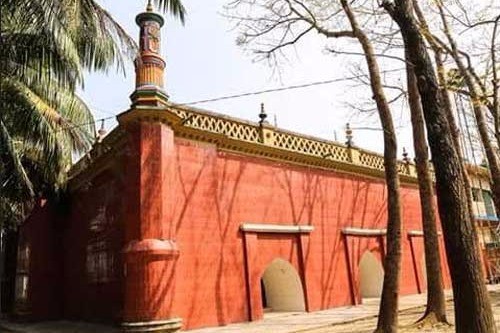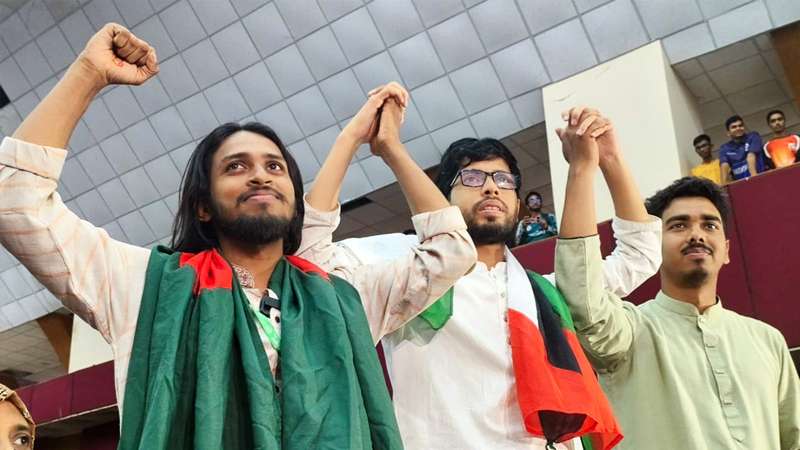 Exploring Madaripur District: A Hidden Gem of Bangladesh-
Exploring Madaripur District: A Hidden Gem of Bangladesh-
Madaripur District, located in central Bangladesh, is a region rich in history, culture, and natural beauty. Known for its scenic rivers, historical landmarks, and vibrant communities, Madaripur is a must-visit destination for travelers looking to explore Bangladesh beyond its major cities. This blog provides a comprehensive guide to the history, geography, economy, and top tourist attractions in Madaripur District.
History of Madaripur District-
Madaripur District is named after the revered Sufi saint Hazrat Badruddin Shah Madar, who played a significant role in spreading Islam in the region. Historically, this district was part of the ancient Bhati region, which was ruled by the Bengal Sultanate and later the Mughal Empire. During British colonial rule, Madaripur was a significant center for the indigo trade and anti-British movements.
After the partition of India in 1947, Madaripur became part of East Pakistan (now Bangladesh). Over the years, it has grown into a thriving district with rich cultural traditions and economic development.
Geography & Climate-
Madaripur District is part of the Dhaka Division and covers an area of approximately 1,144 square kilometers. The district is bordered by Shariatpur, Gopalganj, and Faridpur. The region is characterized by low-lying plains, intersected by rivers such as the Arial Khan and Kumar.
Climate-
Madaripur experiences a tropical monsoon climate with three main seasons:
- Summer (March – June): Hot and humid with temperatures rising up to 38°C.
- Monsoon (July – October): Heavy rainfall and occasional flooding.
- Winter (November – February): Cool and dry, making it the best time to visit.
Economy of Madaripur-
Madaripur’s economy is primarily driven by agriculture, trade, and small industries. The fertile lands of the district make it ideal for cultivating rice, jute, sugarcane, and vegetables. Fishing is also a major economic activity due to the presence of numerous rivers.
In recent years, small-scale industries such as handicrafts, textile production, and boat building have emerged as key contributors to the district’s economy. The introduction of modern irrigation techniques and improved transportation has further boosted economic growth.
Top Tourist Attractions in Madaripur-
Madaripur District boasts numerous historical and natural attractions that draw visitors from across Bangladesh. Here are some must-visit places in Madaripur:
1. Arial Khan River
The Arial Khan River is one of the most scenic rivers in Bangladesh. A boat ride along this river provides stunning views of lush green landscapes, local fishing communities, and the rural beauty of Madaripur.
2. Bajitpur Bazar
Bajitpur Bazar is a bustling marketplace where visitors can explore traditional Bangladeshi goods, handicrafts, and local delicacies. It is an excellent place to experience the everyday life of the people of Madaripur.
3. Khalia Zamindar Bari
This historic palace is a testament to the architectural grandeur of the zamindars (landlords) of Bengal. Visitors can explore the old structures, intricate carvings, and historical significance of the estate.
4. Rajoir Eco Park
For nature lovers, Rajoir Eco Park is an excellent destination. The park offers lush greenery, walking trails, and a peaceful environment for relaxation and picnics.
5. Shukhar Ghat
A riverside spot perfect for witnessing the mesmerizing sunset over the Arial Khan River. This place is a hidden gem for photographers and nature lovers.
Culture & Traditions of Madaripur-
The culture of Madaripur District is deeply rooted in Bengali traditions. The people celebrate various festivals such as Pohela Boishakh (Bengali New Year), Eid-ul-Fitr, Eid-ul-Adha, and Durga Puja with great enthusiasm. Folk music, including Baul songs and Bhawaiya, is an integral part of local culture.
Handicrafts such as weaving, pottery, and bamboo crafts are also significant cultural elements. The district is home to several cultural organizations that preserve and promote traditional Bangladeshi art forms.
Transportation & How to Reach Madaripur-
Madaripur is well-connected to Dhaka and other major cities via road and waterways.
By Road:
- Regular buses operate from Dhaka to Madaripur via the Padma Bridge, reducing travel time to approximately 2.5 to 3 hours.
- Private cars and rental services are also available.
By Waterways:
- Launches and ferries operate between Madaripur and nearby districts, offering a scenic and budget-friendly travel experience.
Best Time to Visit Madaripur-
The best time to visit Madaripur is during winter (November to February) when the weather is cool and pleasant. The monsoon season (July to October) also offers a unique experience for those who enjoy the beauty of lush green landscapes and rivers at their fullest.
Local Cuisine & Food in Madaripur-
Madaripur’s cuisine is rich in traditional Bengali flavors. Some must-try dishes include:
- Hilsa Fish Curry: Made from fresh Hilsa fish caught from the rivers.
- Panta Bhat: Fermented rice served with mustard oil, green chilies, and onions.
- Pithas (Rice Cakes): Traditional Bengali sweets enjoyed during winter.
- Local Sweets: Various types of handmade sweets, including chhanar payesh and roshogolla.
Conclusion-
Madaripur District is a treasure trove of history, natural beauty, and cultural richness. Whether you’re a history enthusiast, nature lover, or someone looking to explore Bangladesh’s countryside, Madaripur has something unique to offer. Plan your trip and discover the hidden gems of this fascinating district!
FAQs About Madaripur District-
1. What is Madaripur famous for?
Madaripur is known for its rich history, scenic rivers, agricultural prosperity, and cultural heritage. It is also famous for being named after the Sufi saint Hazrat Badruddin Shah Madar.
2. How can I reach Madaripur from Dhaka?
You can reach Madaripur from Dhaka by road (via the Padma Bridge) in about 2.5 to 3 hours. Alternatively, you can take a ferry or launch for a scenic journey.
3. What are the best places to visit in Madaripur?
Top places include the Arial Khan River, Khalia Zamindar Bari, Bajitpur Bazar, Rajoir Eco Park, and Shukhar Ghat.
4. What is the best time to visit Madaripur?
Winter (November to February) is the best time due to pleasant weather. However, the monsoon season offers a lush green landscape for nature lovers.
5. What are the main economic activities in Madaripur?
Agriculture, fishing, trade, and small industries such as textile production and boat building are the primary economic activities.













